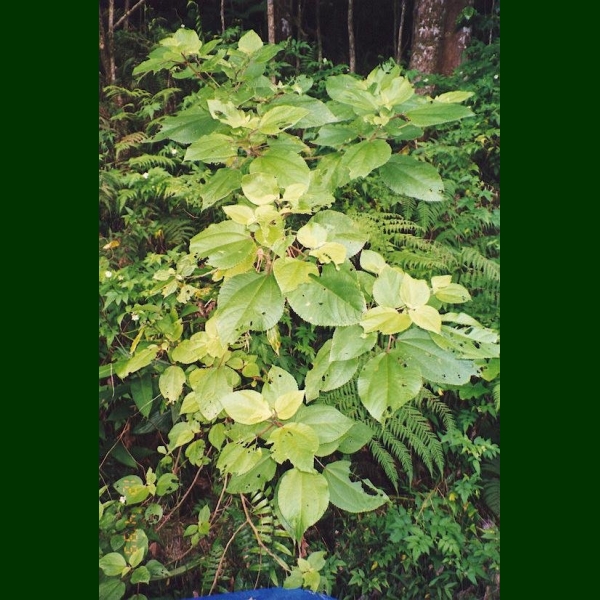 Hawaiian Name(s): māmaki, māmake, waimea (P. albidus on Kauai & P. ruber)
Hawaiian Name(s): māmaki, māmake, waimea (P. albidus on Kauai & P. ruber)Scientific Name: Pipturus (4 species)
Vernacular Name: none
Family: Urticaceae
Status: endemic
Authority: P. albidus (Hook. & Arn.) A.Gray, P. forbesii Kraj., P. kauaiensis A.Heller, P. ruber A.Heller
Description: Shrub/small tree 3-10 m tall, very hard wood.
Habitat P. albidus in mesic to wet forest, diverse mesic forest, mesic valleys (0–) 70–1870 m (Kaua ‘i, O‘ahu, Moloka‘i, Lāni‘i, Maui, Hawai‘i), P. forbesii in high altitude wet forest and supalpine shrubland 1525–1860 m (E. Maui), P. kauaiensis in mesic valleys and diverse mesic forest 60 –1280 m (Kaua‘i), P. ruber wet in wet and diverse mesic forests and mesic valleys 200–1370 m (Kaua‘i) (Wagner et al. 1990:1308–1310).
Medicines: For ‘ea and pa‘ao‘ao, a treatment uses part of the māmaki fruit (Chun 1994:216–217). The leaves are made into a tea for a generally "run-down" person (Abbott 1992:102) or as a "cleansing agent" (Krauss 1993:103).
Non Medicinal Uses: Inner bark fibers used in making kapa (Abbott 1992:50–52; Malo 1951:22,48), also sap might be used in wetting solution during kapa-making process (Krauss 1993:64). The long strong fibers were used for rope and cordage (Summers 1990:21–22)
Specific gravity of wood: unknown
Famous Locations:
Mele:
`Ōlelo Noeau:
Dye Color and Parts:
Kino lau:
Location on Bishop Museum Kalihi Campus:
Propagation Information: Cuttings 4-6 in; seeds sown in fine, moist, well-compacted potting medium (Bornhorst 1996:45–46).
Hawaiian Native Plant Propagation Database.
Native Plants Hawaii.
Seed: Seed length approximately 0.7-1.0 mm. Photograph: B.Kennedy. Species: P. albidus.
Click for image
